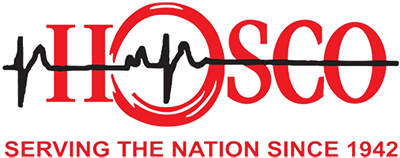Type | Small Handheld Models |
Brand | Scure |
Flow Rate | 5 LPM |
Oxygen Concentration | Yes |
Warranty | 2 |
Sound Level | No |
Flow | Single Flow |
Country of Origin | Made in India |
An oxygen concentrator is a medical device used to deliver oxygen therapy to individuals who require supplemental oxygen. Unlike portable oxygen cylinders, which store oxygen gas, oxygen concentrators extract oxygen from the surrounding air and deliver it to the user in concentrated form. Here’s a detailed description of an oxygen concentrator:
Functionality: Oxygen concentrators work by drawing in ambient air, which is composed of approximately 78% nitrogen and 21% oxygen, along with other gases. The concentrator then filters out nitrogen and other impurities, leaving behind a highly concentrated stream of oxygen. This purified oxygen is delivered to the user through a nasal cannula or mask. Components: An oxygen concentrator consists of several key components, including an air compressor, sieve beds filled with zeolite granules, a pressure swing adsorption (PSA) system, and a delivery system (such as tubing and a nasal cannula or mask).Air Intake: Ambient air is drawn into the oxygen concentrator through an air intake filter. The filter removes dust, pollen, and other particulate matter from the air before it enters the concentrator.Compression: The air compressor compresses the incoming air and delivers it to the sieve beds at high pressure.Sieving Process: The sieve beds contain zeolite granules that adsorb nitrogen molecules while allowing oxygen molecules to pass through. As the compressed air flows through the sieve beds, nitrogen is selectively adsorbed, leaving behind a stream of highly concentrated oxygen.Oxygen Delivery: The concentrated oxygen is delivered to the user through a delivery system, such as nasal cannula tubing or a face mask. The flow rate of oxygen can be adjusted to meet the individual’s prescribed therapy needs.Continuous Operation: Oxygen concentrators can operate continuously, providing a steady supply of oxygen to the user without the need for refills or replacement cylinders. They are powered by electricity and can be used at home, in healthcare facilities, or during travel.Types: There are two main types of oxygen concentrators: stationary and portable. Stationary concentrators are designed for use at home or in healthcare facilities and are larger and heavier. Portable concentrators are smaller, lightweight, and battery-operated, allowing users to move around freely while receiving oxygen therapy.Safety
Features: Oxygen concentrators are equipped with safety features to ensure safe and reliable operation, including alarms for low oxygen purity, power failure, and high internal temperature. They also have filters to remove bacteria and other contaminants from the oxygen stream.Maintenance: Regular maintenance is required to keep the oxygen concentrator functioning optimally. This includes cleaning or replacing filters, inspecting tubing and connections for leaks, and ensuring proper ventilation around the concentrator.In summary, an oxygen concentrator is a vital medical device that provides supplemental oxygen therapy to individuals with respiratory conditions or those in need of oxygen support. It offers a safe, efficient, and convenient alternative to portable oxygen cylinders, allowing users to receive oxygen therapy in a variety of settings.

